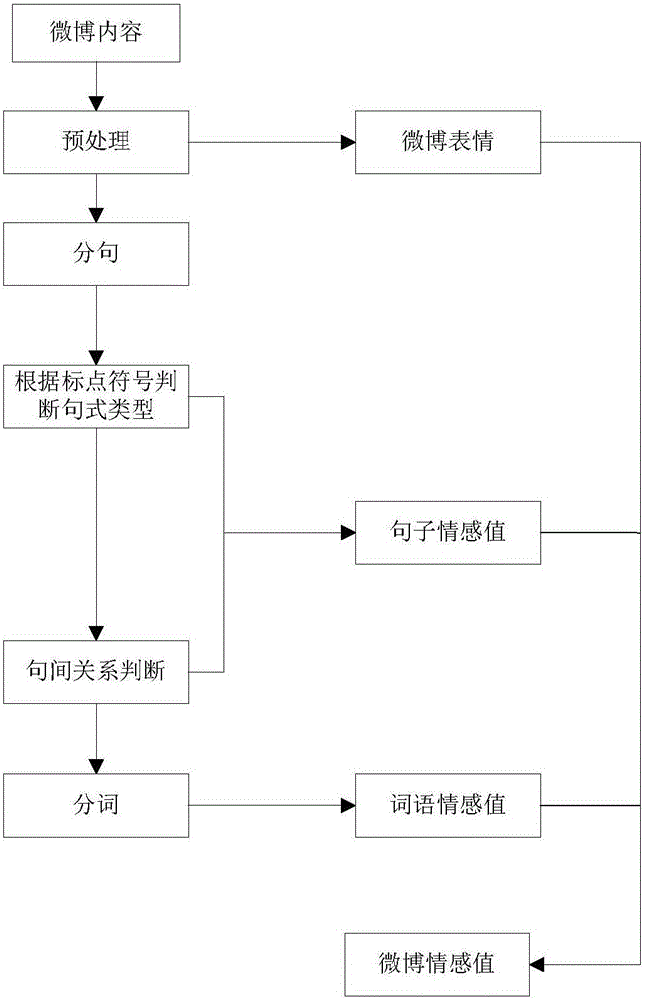Microblog emotion analysis method based on standard dictionaries and semantic rules
A sentiment analysis and microblog technology, applied in the field of pattern recognition, can solve the problems of ignoring the contextual relationship of words and syntactic rules, and the effect of microblog short text analysis is not ideal, so as to achieve the effect of high classification accuracy
- Summary
- Abstract
- Description
- Claims
- Application Information
AI Technical Summary
Problems solved by technology
Method used
Image
Examples
Embodiment Construction
[0021] The present invention will be further described below in conjunction with the accompanying drawings and specific embodiments.
[0022] Such as figure 1 As shown, the embodiment of the present invention provides a microblog sentiment analysis method based on standard dictionaries and semantic rules, including
[0023] The following steps:
[0024] Step 1. Collect Weibo dataset
[0025] Collect 10,000 Weibo data from Sina Weibo data, and manually score the emotional tendency value of each Weibo; the emotional polarity is divided into positive, negative and neutral, and the division is in [-1, 1] between.
[0026] Step 2. Perform normalized text preprocessing on Weibo data
[0027] Perform text preprocessing on the collected microblog data, delete special characters and remove microblog emoticons existing in the text, and divide the microblog text into parts containing only microblog emoticons and plain text that is conducive to program analysis part, and perform word...
PUM
 Login to View More
Login to View More Abstract
Description
Claims
Application Information
 Login to View More
Login to View More - R&D
- Intellectual Property
- Life Sciences
- Materials
- Tech Scout
- Unparalleled Data Quality
- Higher Quality Content
- 60% Fewer Hallucinations
Browse by: Latest US Patents, China's latest patents, Technical Efficacy Thesaurus, Application Domain, Technology Topic, Popular Technical Reports.
© 2025 PatSnap. All rights reserved.Legal|Privacy policy|Modern Slavery Act Transparency Statement|Sitemap|About US| Contact US: help@patsnap.com



